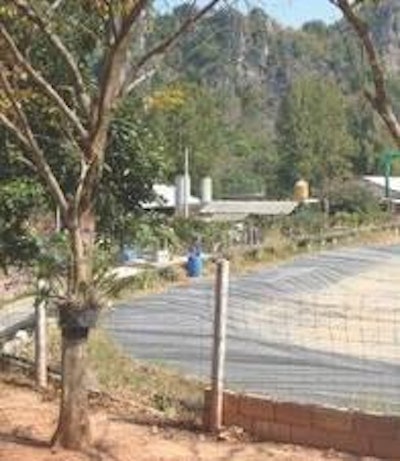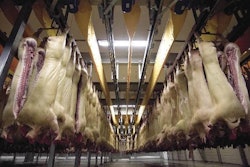
Can pig farmers really benefit from renewable energy? In other words, will the cost of investing in this new technology to meet the demands of what many see as just another fashion actually pay off and lead to lower electricity bills in the short to medium term, without affecting production?
That's the sort of question producers around the world are asking as an increasing number of experts blame emissions from fossil fuel, among other things, for causing global warming and increasingly predict an end to plentiful supplies of oil.
So what can a pig producer do?
First, of course, the sensible thing for them to do is reduce the need for energy in any form renewable, or not and many producers around the world are already doing this by replacing high energy consuming infra-red lamps in the nursery with lower energy heat pads. They are also using new low-energy bulbs, instead of the conventional 60W or 100W lights in other pig accommodation.
One UK pig farmer claims to have cut his annual energy bills by some £70,000 by switching to low energy installations and introducing a "switch it off" campaign, insisting that his staff switch off the lights whenever they could.
"We started by switching off the lights whenever possible and then we swapped all the conventional 60W light bulbs (abut 900 in total) for 11W low-energy ones, which cost us about 49p each and again helped reduce our energy bills," he told me. "In addition, after discussions with the British Pig Executive's Knowledge Transfer team, we fitted "save it easy" adapters, which cost about £12 each to all the fluorescent lights. This means that a T5 tube (35W) can be used instead of a T8 tube (58W) while still giving off the same amount of light.
"We found that low-energy (11W) bulkhead bulbs provided enough light for sows in the farrowing units and provided a calmer atmosphere for them. This meant we could turn off even more of our fluorescent lighting while still maintaining welfare and performance."
Using pig slurry to make biogas
But pig farmers can move even further on the energy front because they are ideally placed to generate their own energy, as well as saving it and they can cut waste disposal costs at the same time by using pig slurry to produce biogas via anaerobic digestion (AD) for their own use as well as sell to national grids.
There are already more than 6,000 farm-scale AD plants, producing biogas to generate heat and power, in operation in Germany and an increasing number of farmers in Denmark and the UK are also converting to AD systems.
Observers believe that producers with more than 600 sows should be able to make such a system pay back within five to 10 years.
But in order to make it profitable, it is important that farmers are aware of available grants, premiums and the opportunities to earn extra cash by selling the bio-fertiliser that is produced as a by-product to other arable farmers, as well as the biogas and the reductions in their own power bills.
Producers also need to add some organic waste to the slurry to boost biogas production, so they should speak to their local waste authorities to see where they can help by taking in kitchen and other food waste to add to the AD mix. This will also allow them to earn extra by charging gate fees for the additional waste operation.
Boosting income
Opting for renewable energy should enable farmers to diversify to boost income and reduce their power bills but like all good things, it needs careful study and some effort, as well as the willingness to work with others, if necessary, to be successful.
Bruno Sander Nielsen, chief adviser to the Danish Agricultural Council and secretary of the country's Biogas Association, believes biogas production is a good choice for pig farmers because it enables them to reduce waste while increasing production and obtain their own sustainable source of power, as well as earn extra revenue by selling surplus energy and the AD by-product of bio-fertiliser.
"You need about 10,000 metric tons of manure, including a portion of organic (kitchen or food) waste a year to become viable," he said. "This can be achieved either on individual medium to large scale pig farms or by a group of farmers all using one AD facility and sharing the costs, as well as the profit.
"Often the viability of these projects will depend on whether the local or national authorities are prepared to pay a premium for the "green" power.
While there still are conflicting messages over the merits of on-farm AD, there is no getting away from the opportunity for pig farmers everywhere to exploit anaerobic digestion technology to generate power, reduce waste and earn extra income by selling excess energy to their national grids.

















